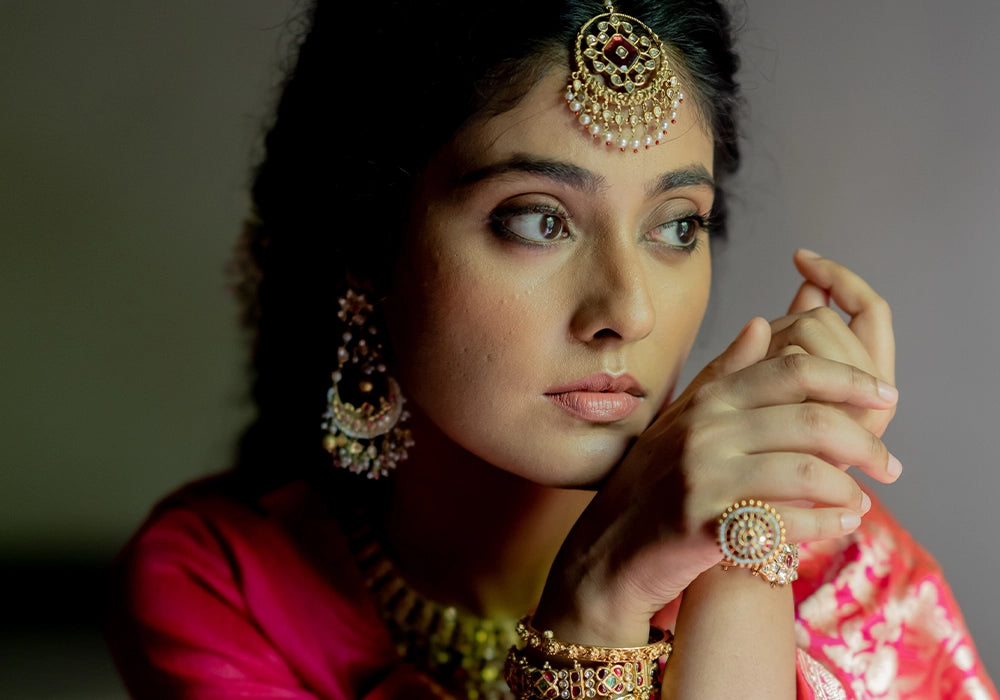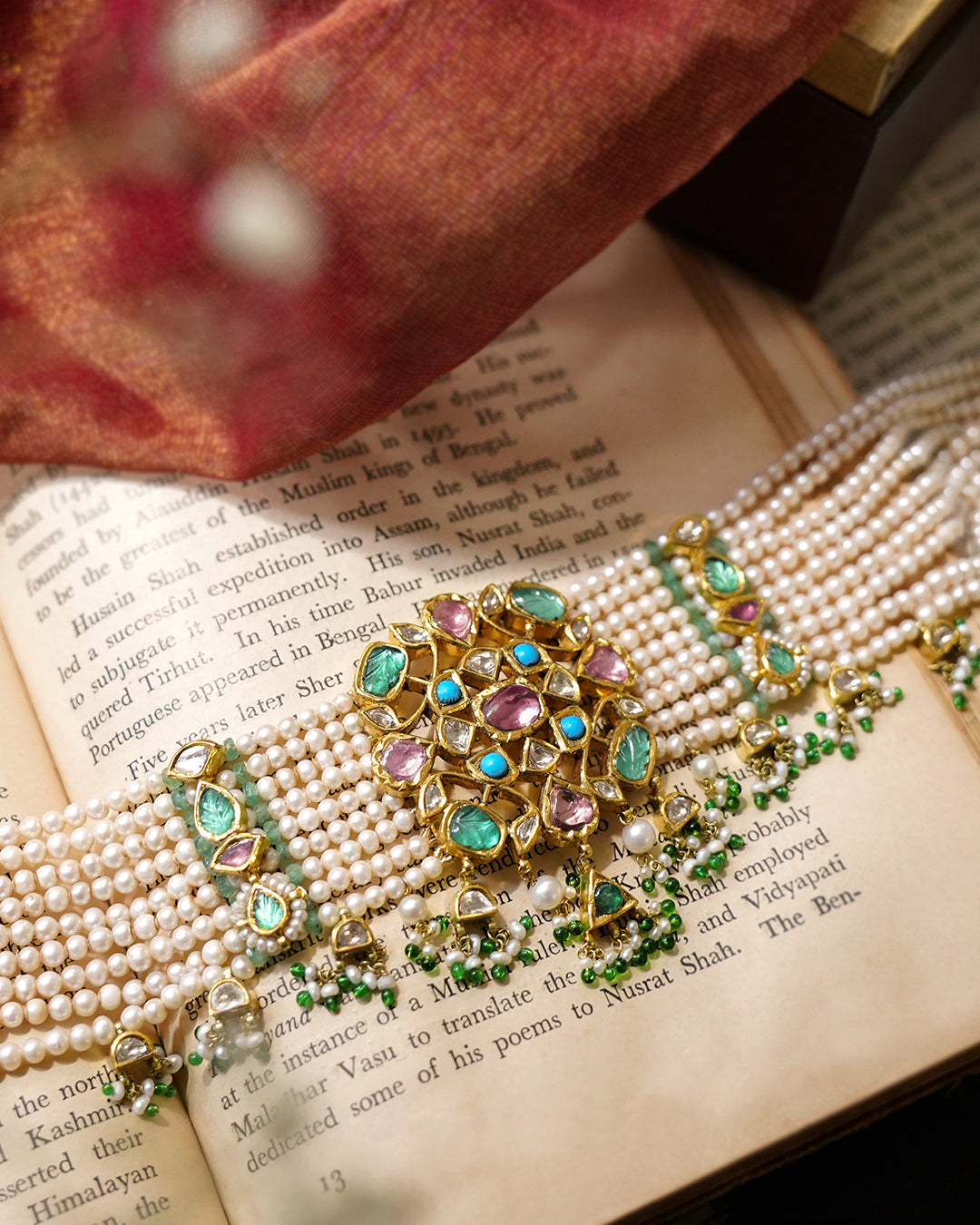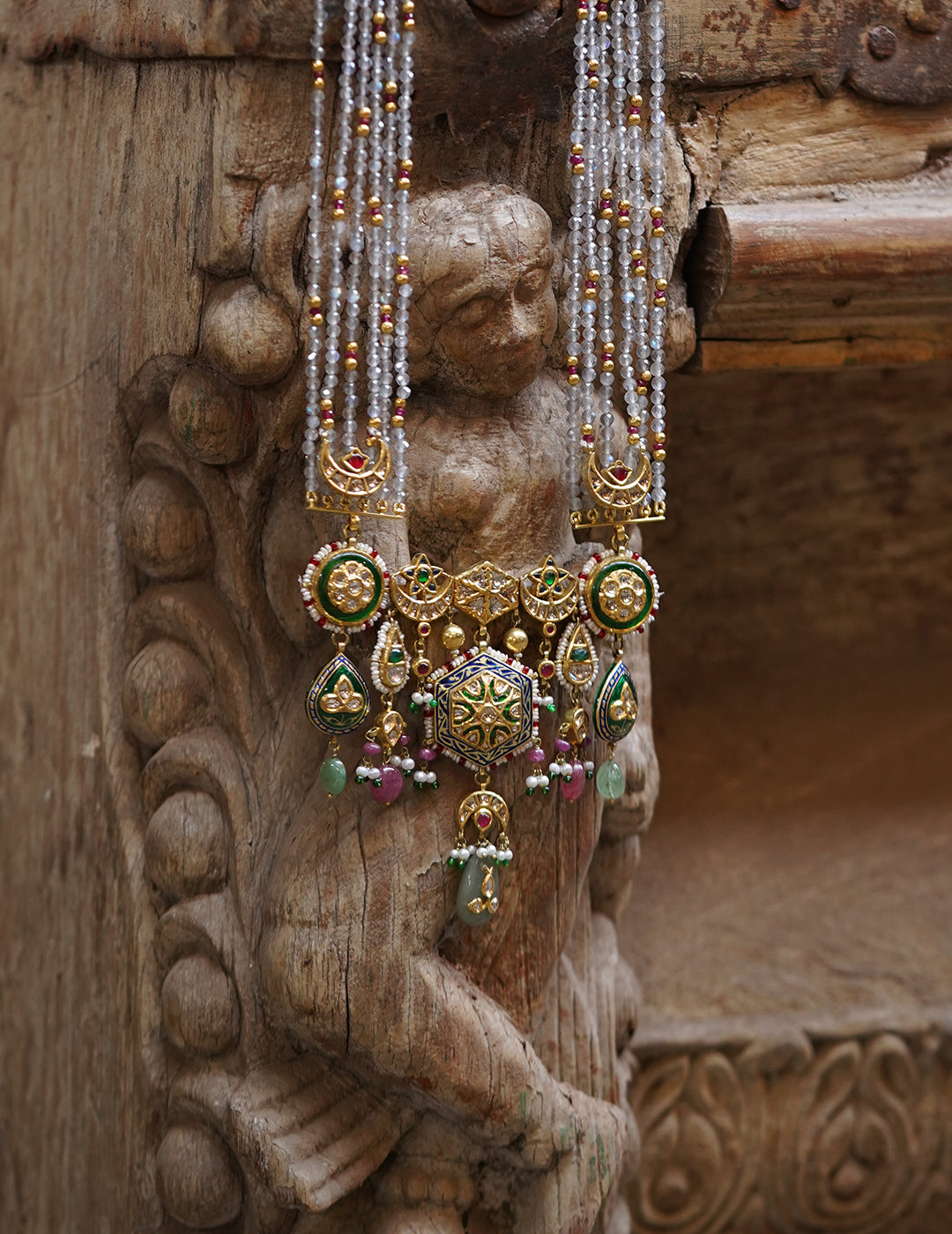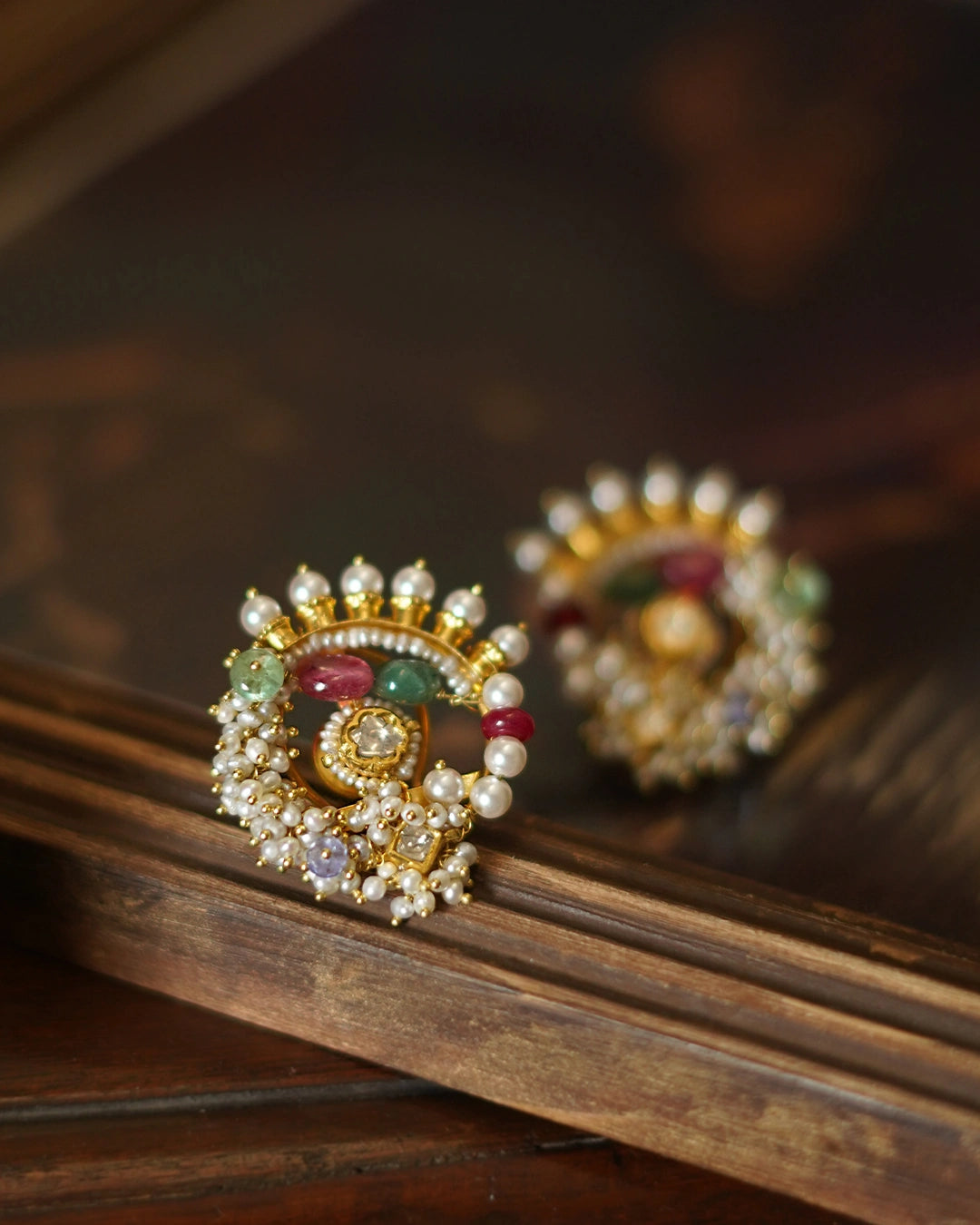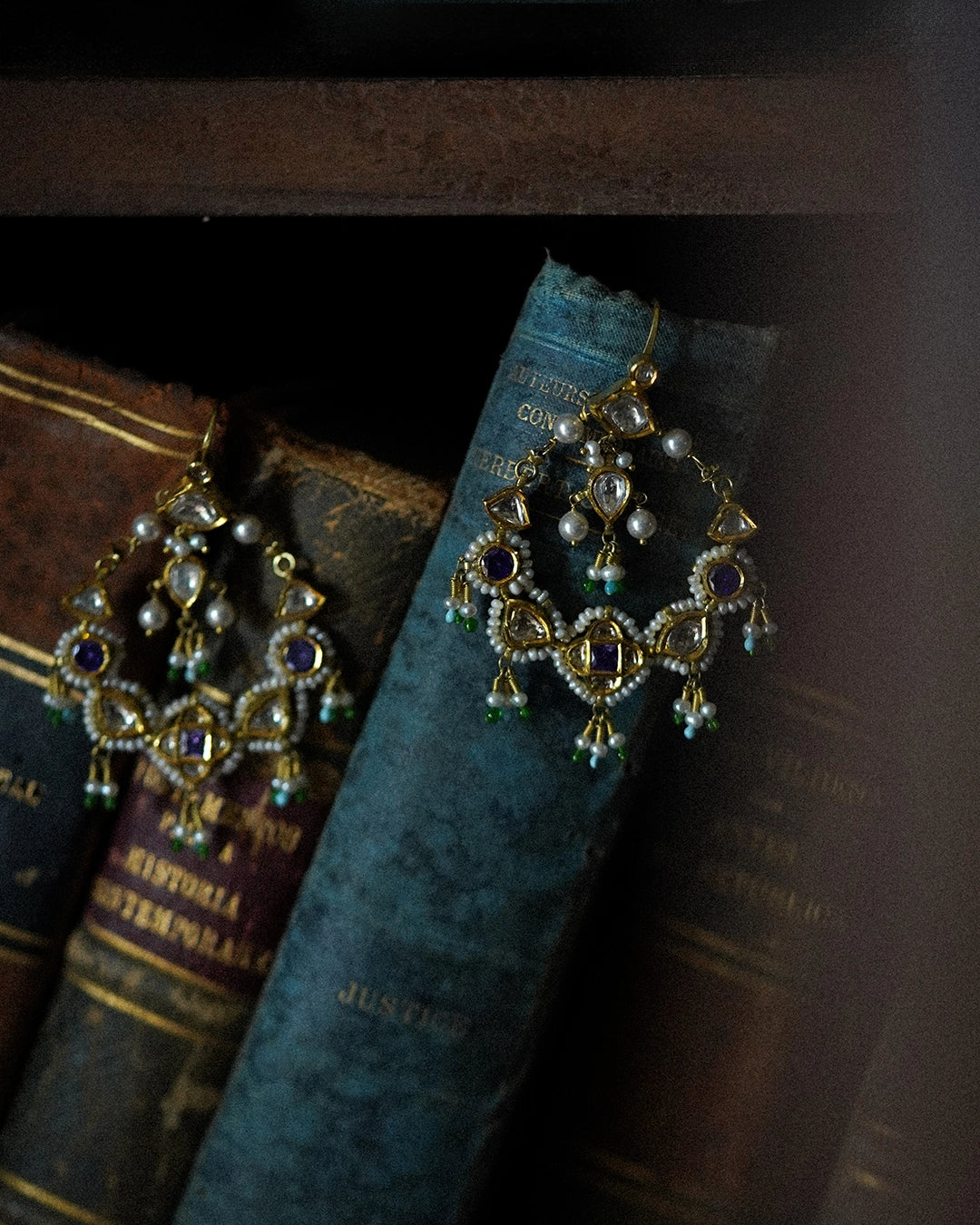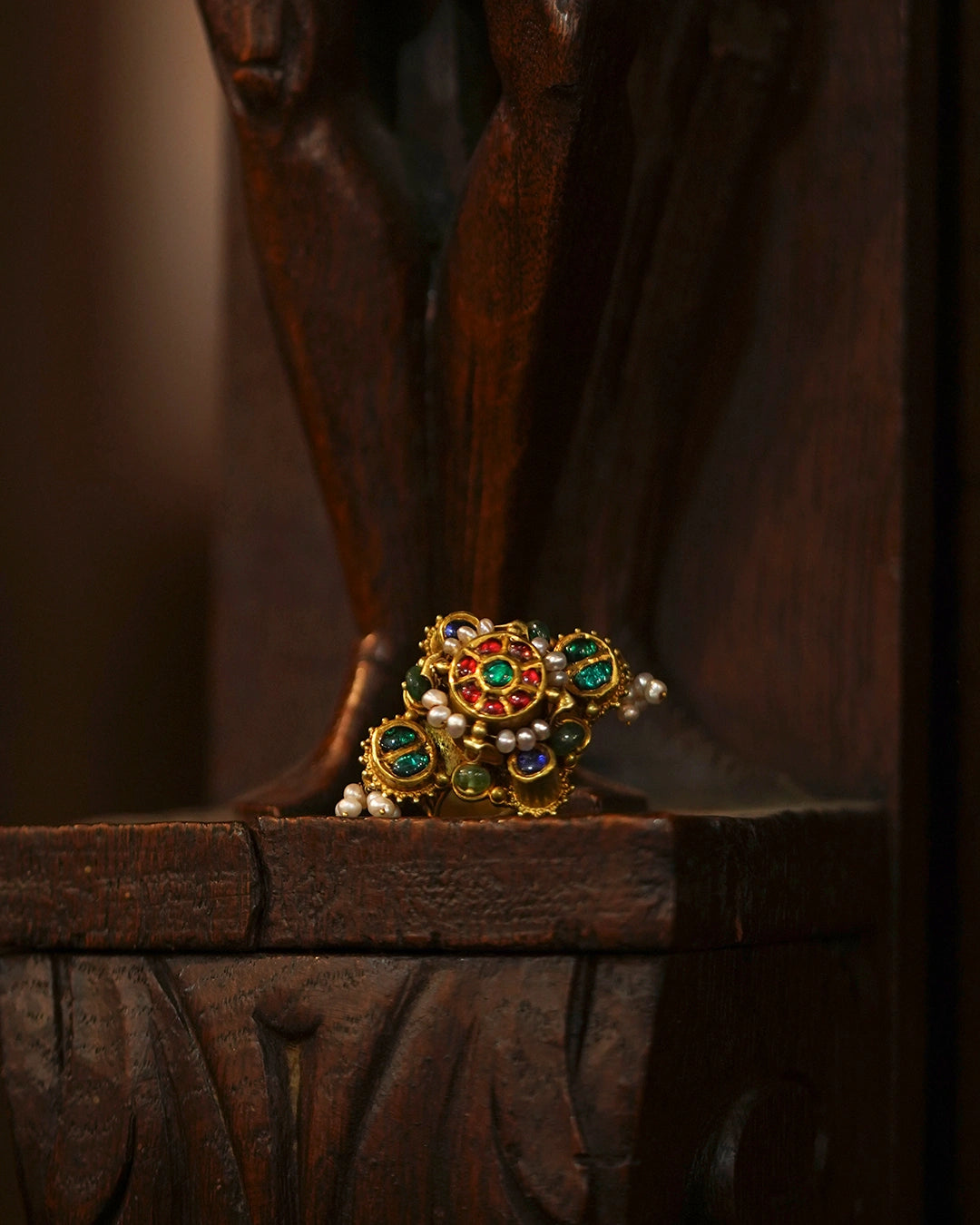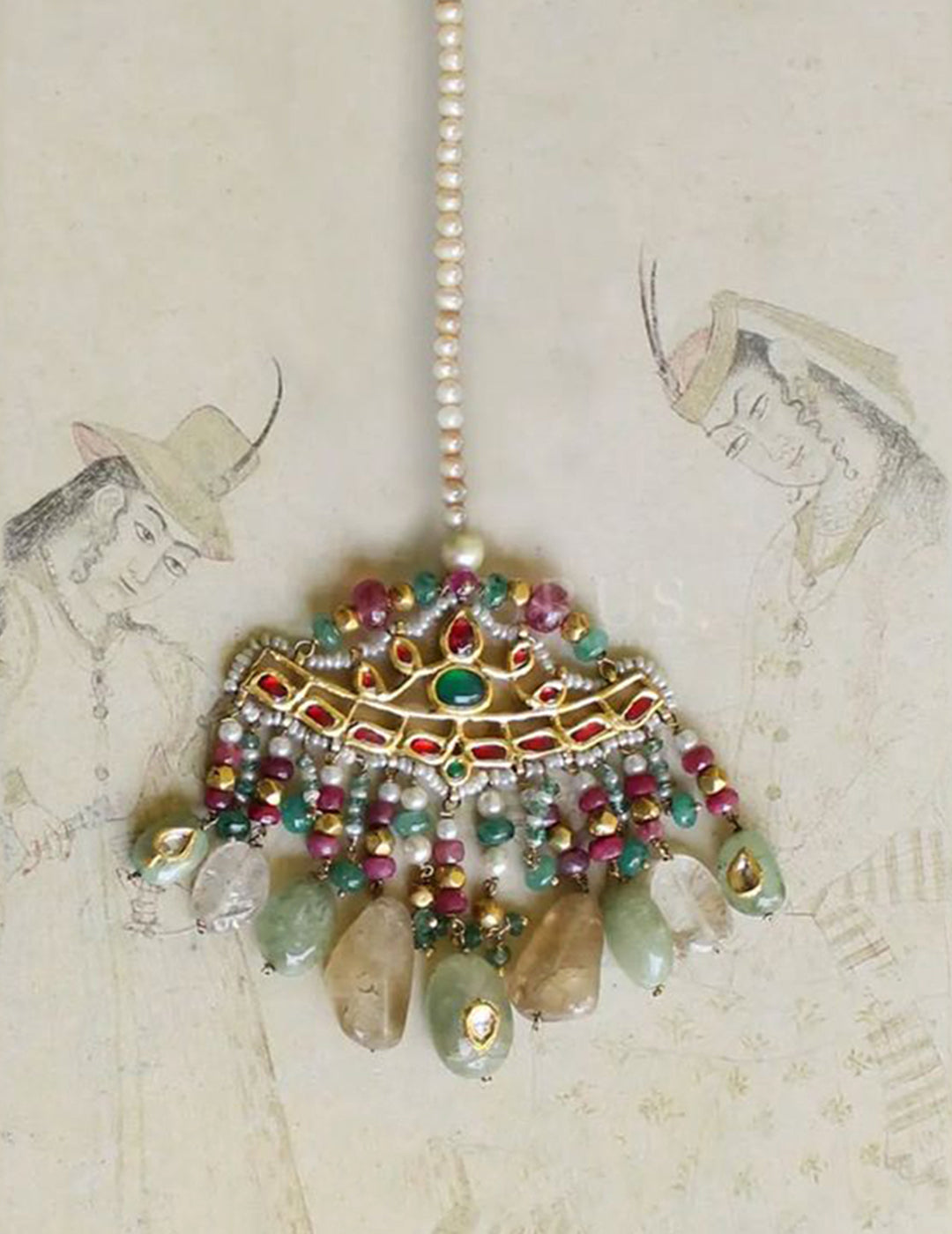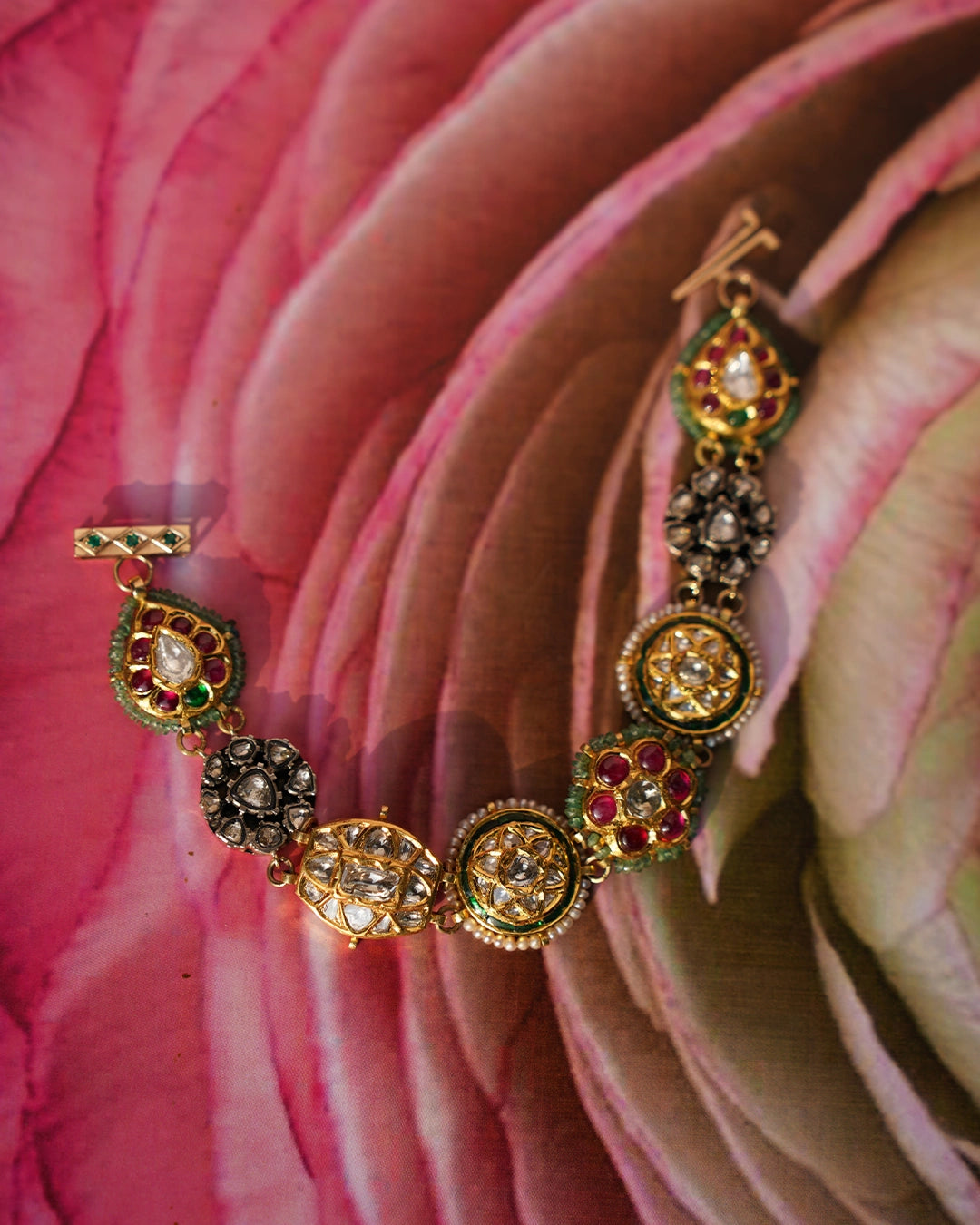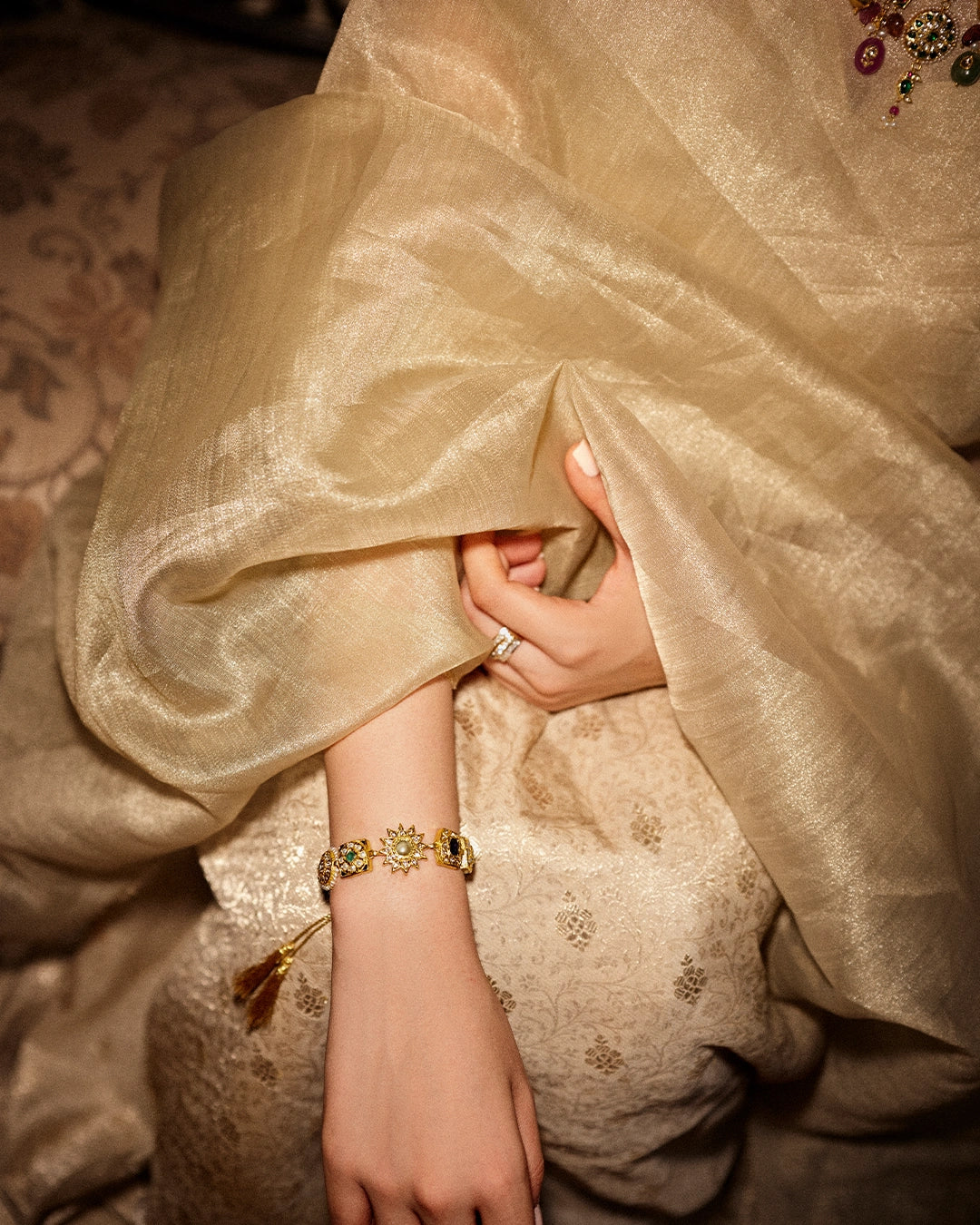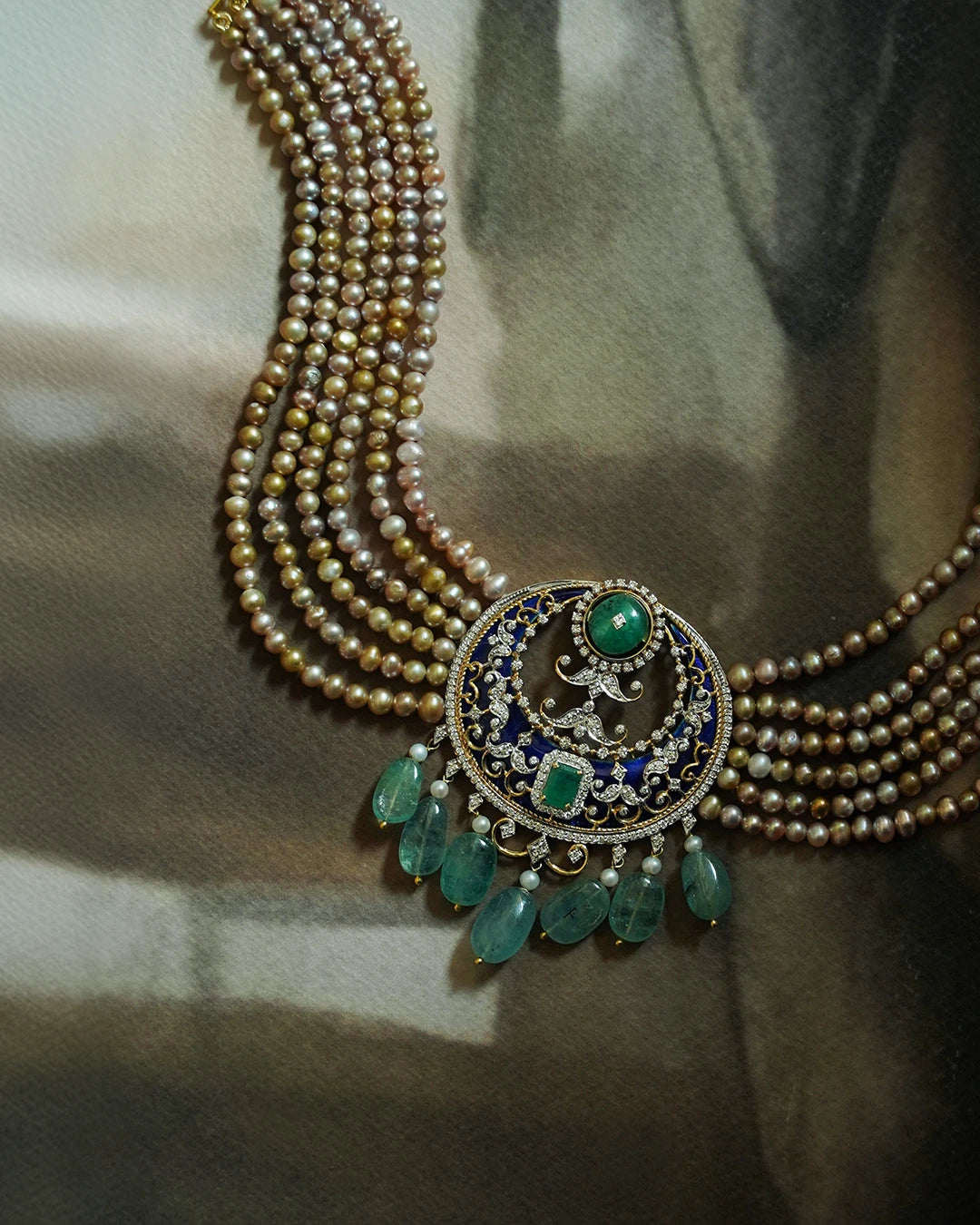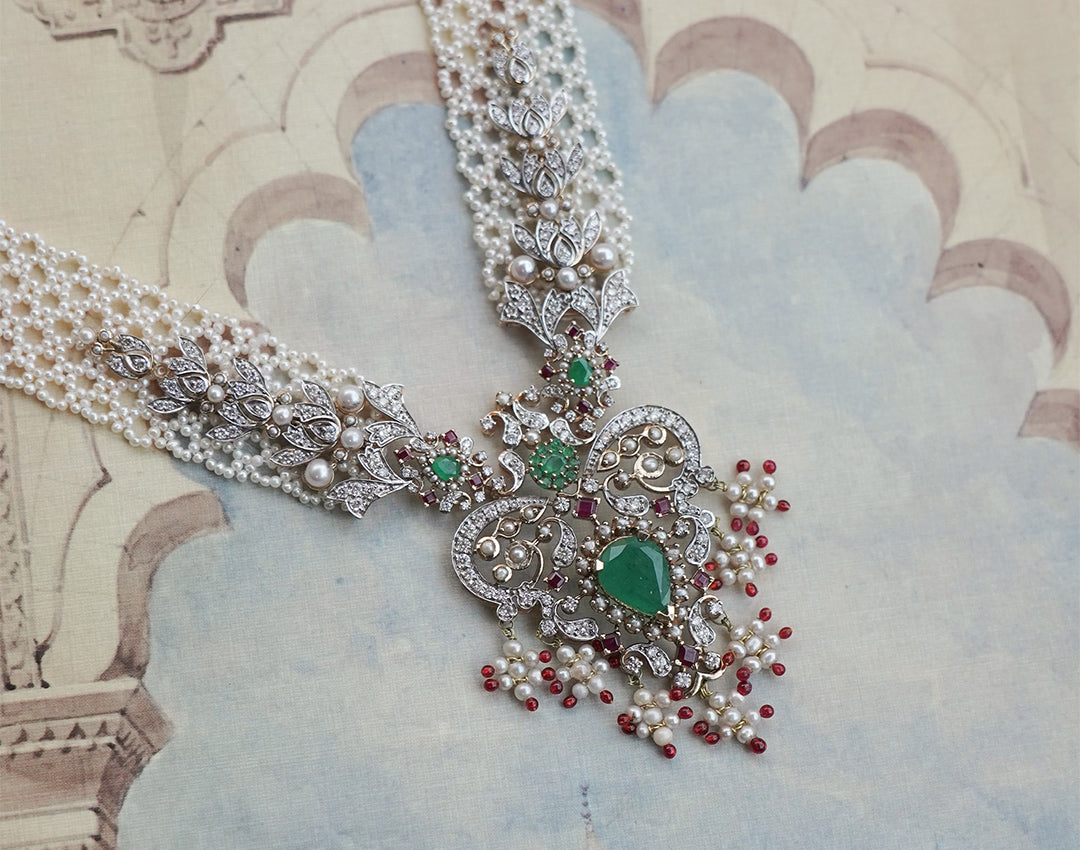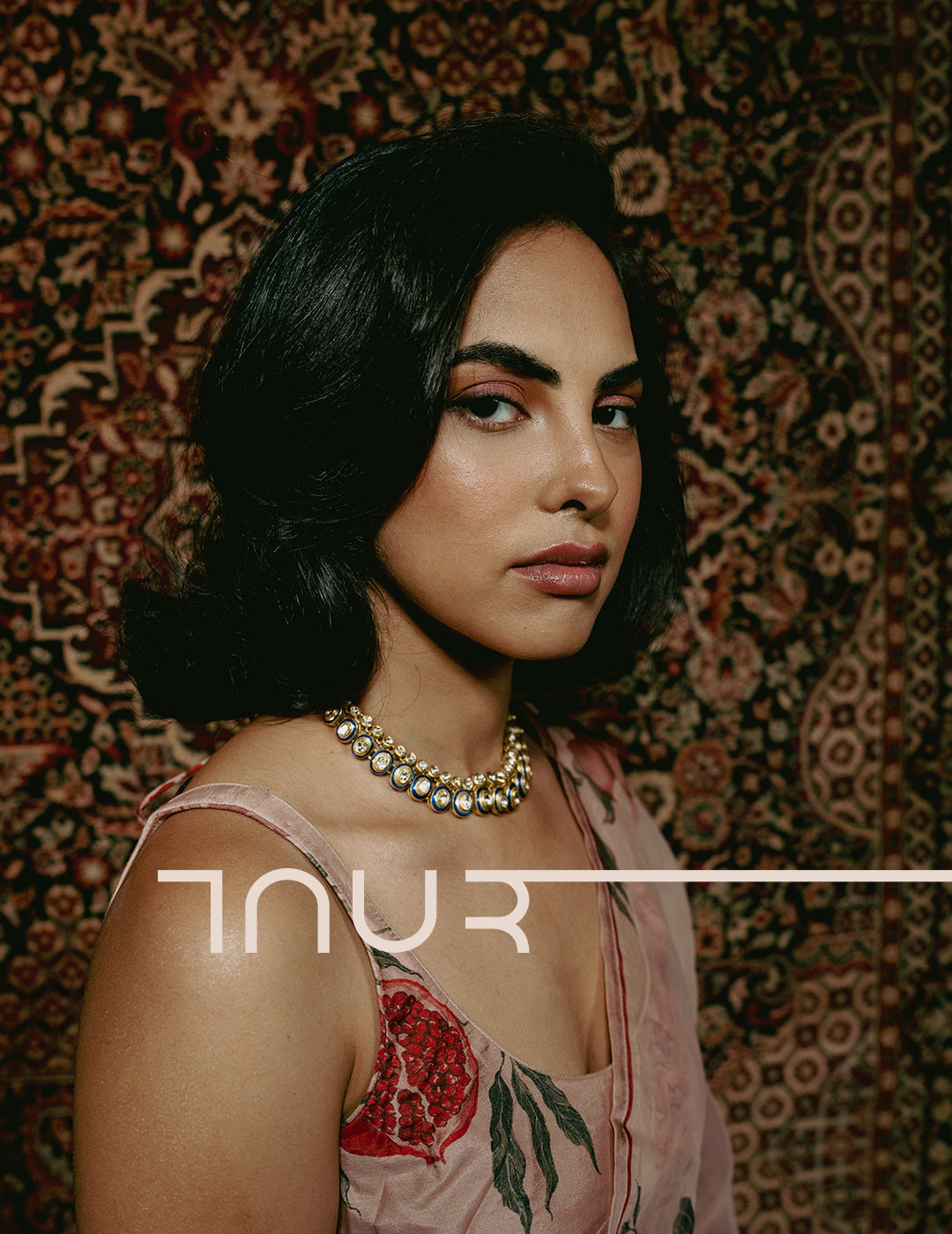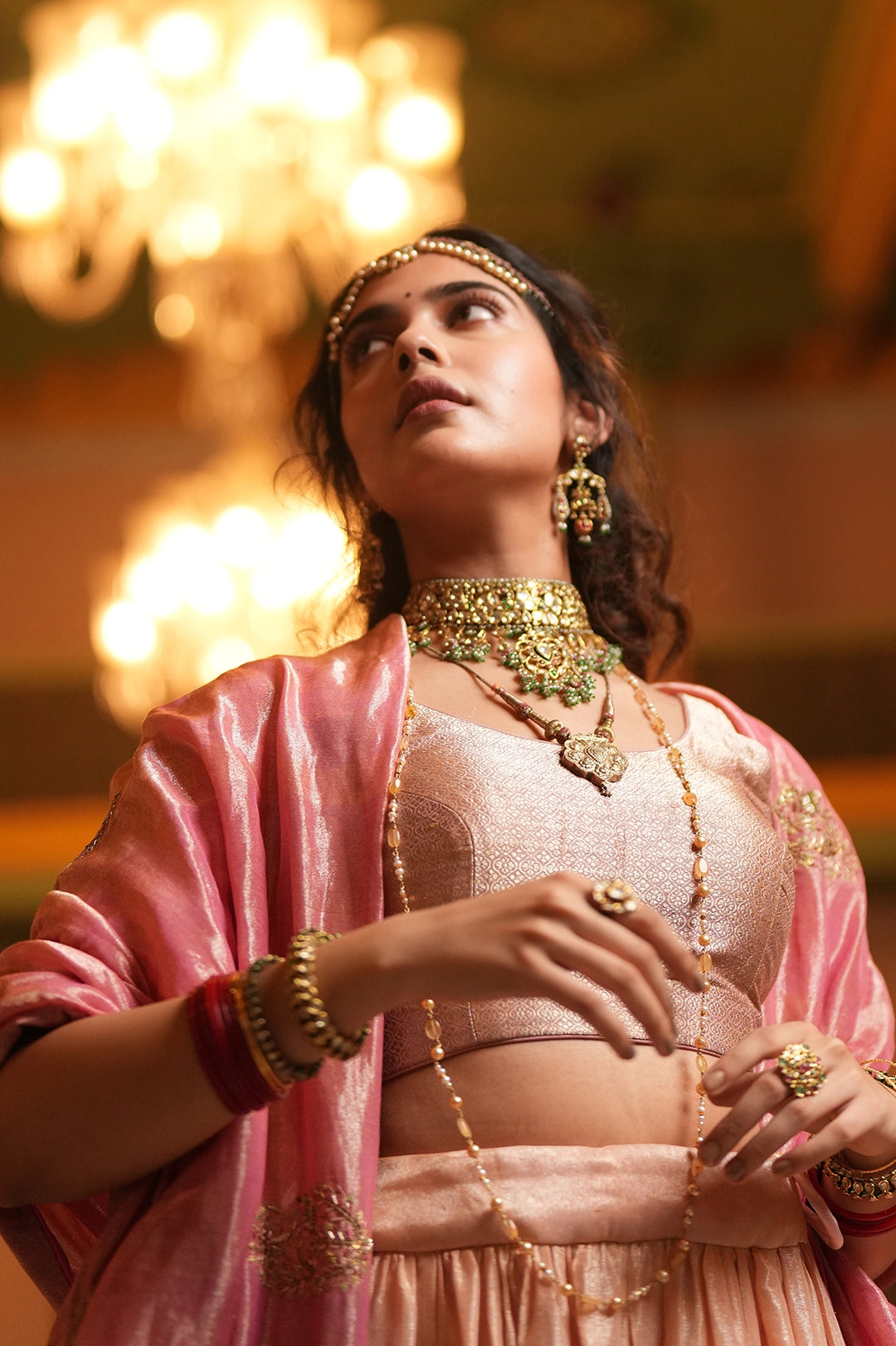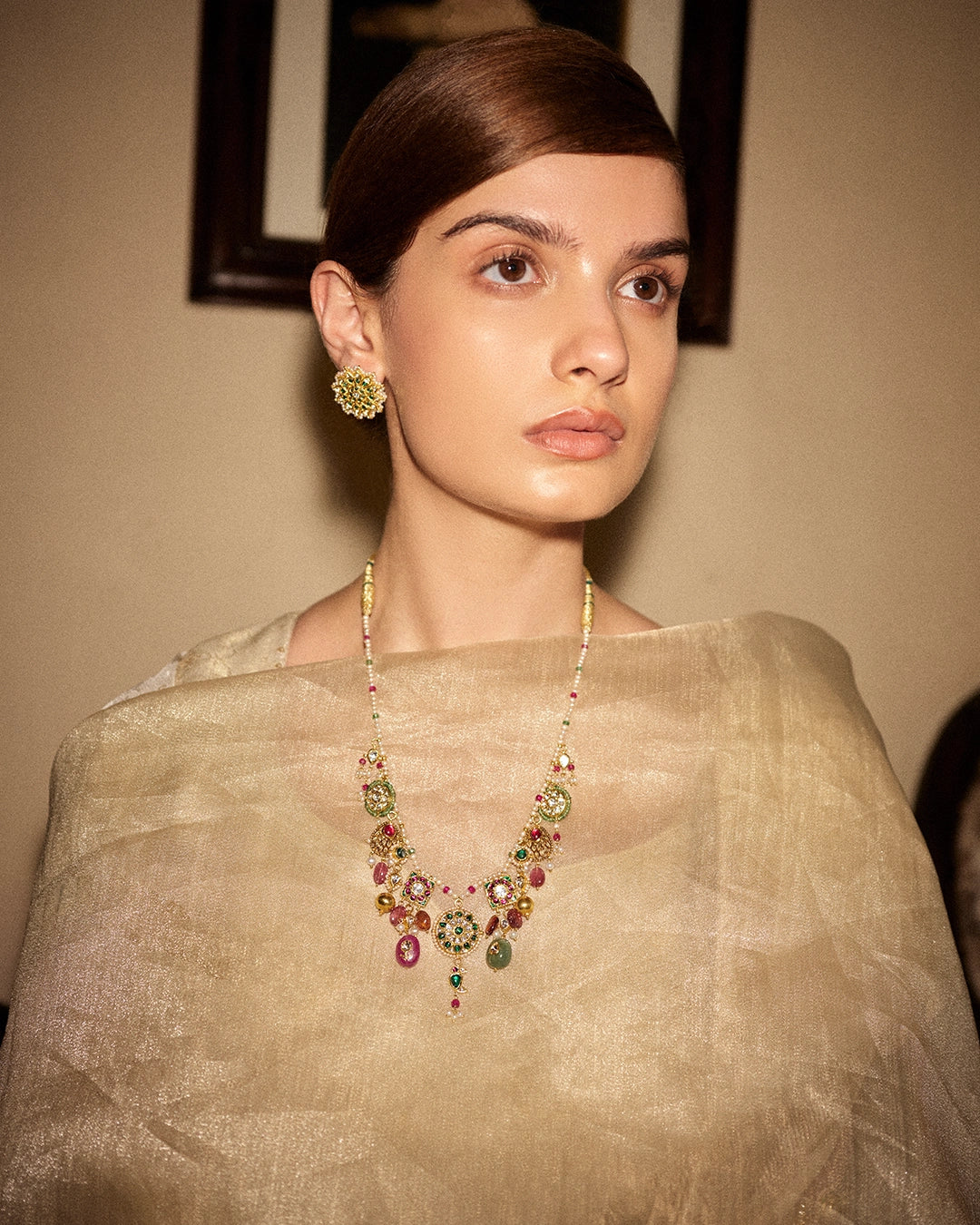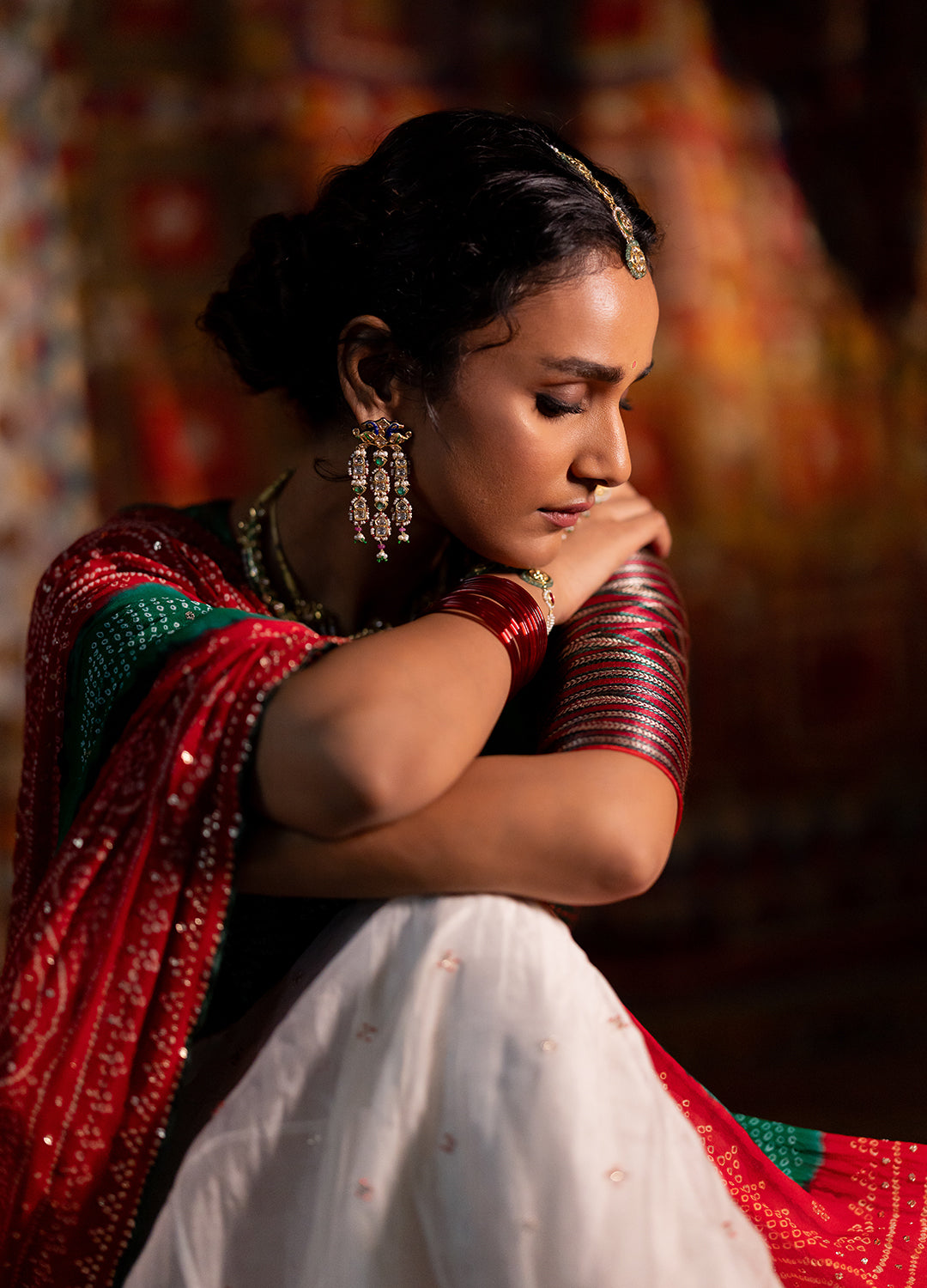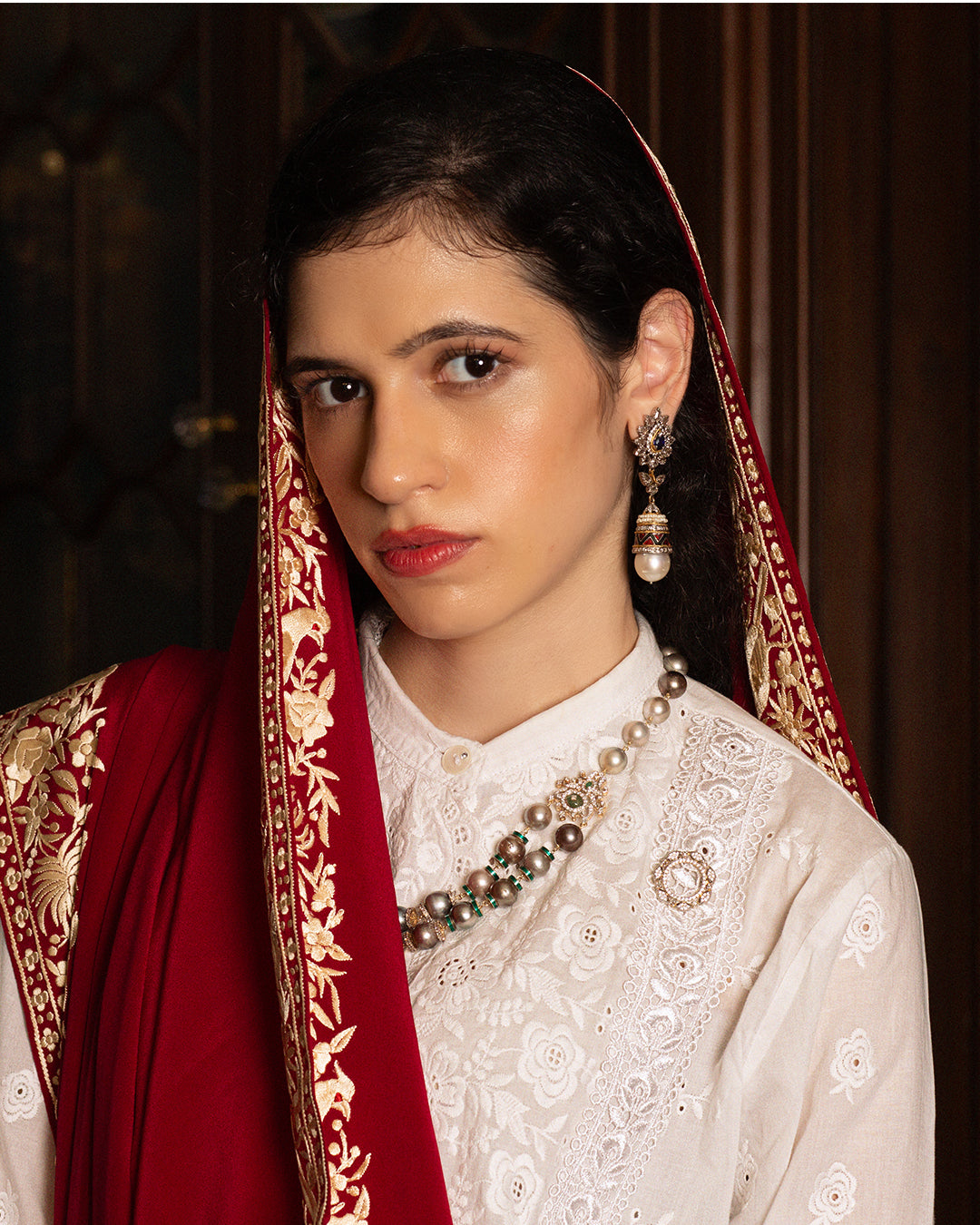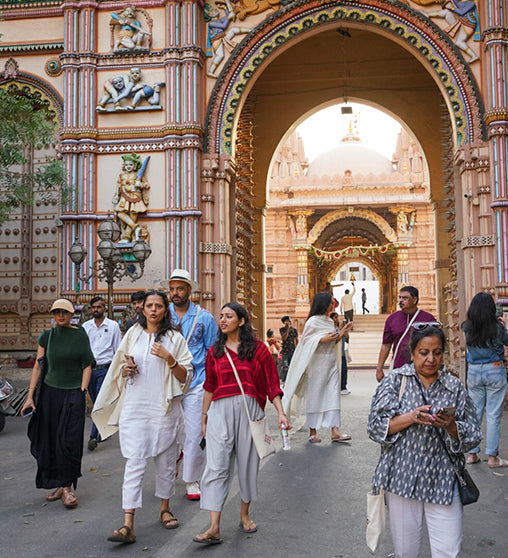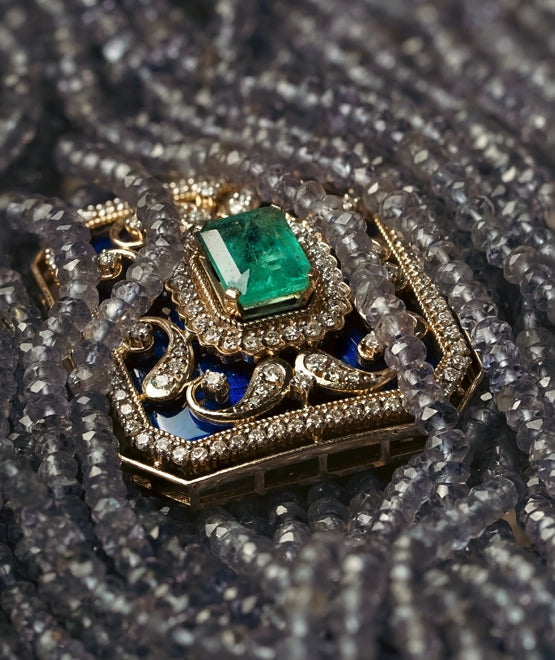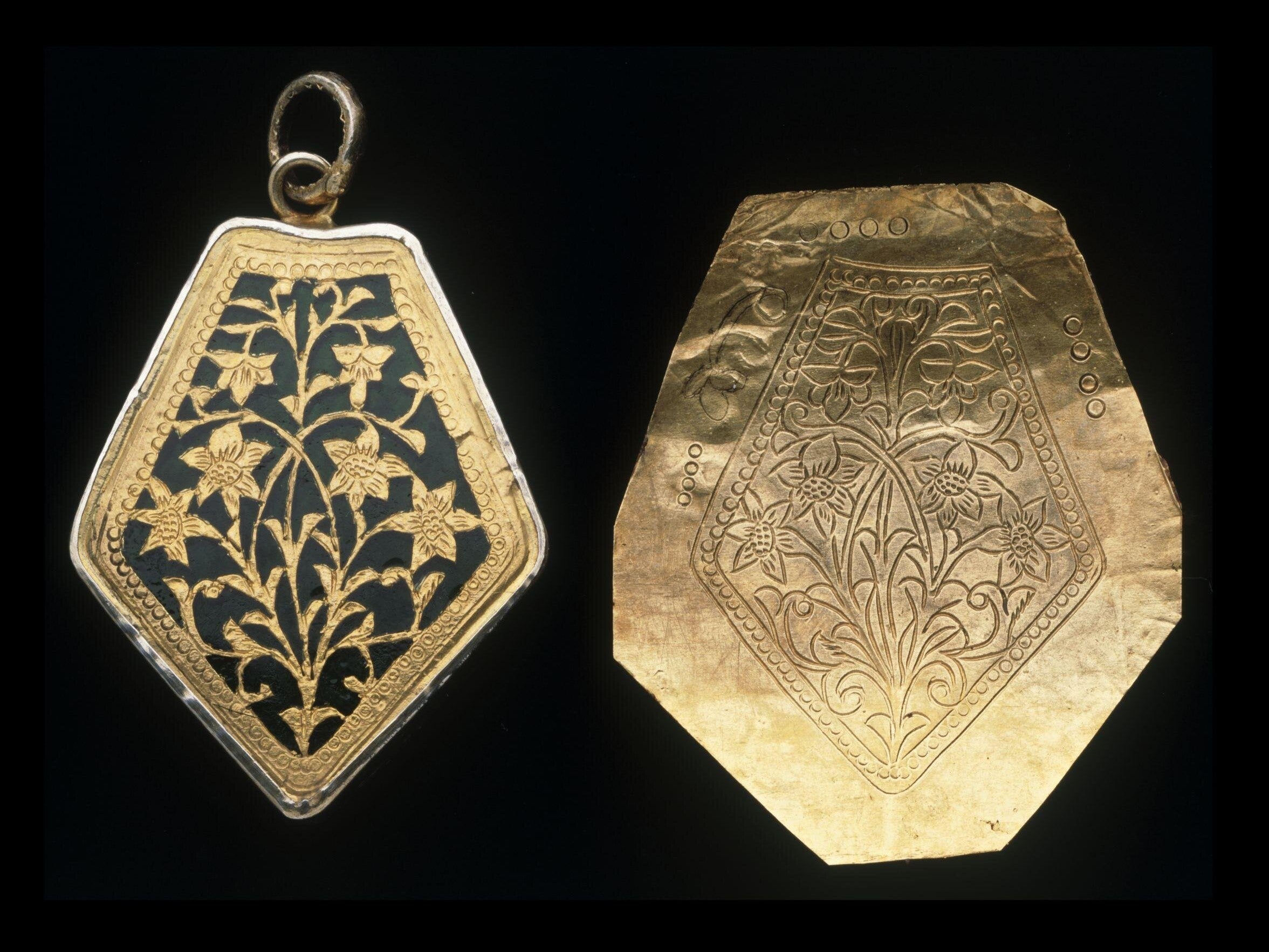Beautiful and elaborate, Thewa is a 2–3 centuries-old gold jewelry-making art form that originated in the Partabgarh (also known as Pertabgarh or Pratapgarh) district in Rajasthan. Only the men belonging to the lineage of Nathuni Sonewalla, a goldsmith and the creator of Thewa work, practice it. He developed this art form in 1767, during the reign of Maharawat Samant Singh of Partabgarh.
As has been the case with many other traditional, established art forms, the craftsmen of this gold jewelry-making art form have managed to retain their trade secrets and have never disclosed all of the specifics of their Thewa work to anybody outside of their family or group. In order to maintain secrecy, they even forbid their daughters and son-in-law from visiting their workspaces. Because of this secrecy, whatever information is available is based on the details they disclose, along with a meticulous study of as many Thewa gold jewelry pieces and other works as possible.

A Thewa Parure consisting of a necklace, a pair of earrings, a bracelet, and a brooch, each piece made using finely carved and etched gold sheets fused with green-colored glass to create hunting scenes.
Parures like this one are rare as usually these are split over time or suffer condition issues due to the delicate nature of the material. This gold jewelry set is an example of the British taste for this peculiar technique.
Source and image courtesy: Sotheby's
From Sona ki Chadar to Jadana—The Thewa Process Explained
Thewa work can be described as a process in which a pierced work patterned sheet of gold foil is fused with colorful transparent glass, which is then placed with a separate foil back into a bezel on jewelry or other objects.
The patterned metal sheet (sona ki chadar) of the Thewa gold jewelry is made entirely of pure 24K gold. To create the pierced-work design, several blank foil sheets, slightly larger than the final outcome are placed side by side, one after the other, on a lac-coated board, which acts as the working space. The lac is warmed, and the metal is lightly pressed into it. When cold, the lac solidifies. It holds the metal, and its resilience allows the metal to withstand pressure during work.
A sharp steel scriber is used to carefully define traditional design subjects on the gold surface (sui). Small chasing punches (chheni), rather than gravers, are used to create the details within the subject outlines. Each face has a unique shape and pattern, such as straight and curved lines, dots, and textures. A light impression is enough to leave a mark on the thin gold foil.

A member of the Raj Soni family, descendants of Nathuni Sonewalla, meticulously outlining patterns on a gold foil.
Image courtesy: world art community
Leaving the surrounding frame intact, the entire internal background of the design is then removed by piercing, done with thin, sharp chisels (tankla) made by the craftsmen themselves in the shapes required. The colored glass then becomes visible through these openings as a result. The final sheet (Thewa ki patti) is heated, cleaned, and dried after being carefully removed from the lac surface. Excess metal outside the design frame is clipped and reclaimed, as are small pieces of gold extracted from the background.
Transparent, bubble-free glass sheets are cut into shapes that correspond to the decorated foil. The glass is then placed on a sheet of mica, which will not adhere to the glass when heated. The finished gold foil is placed on top, and the two are transferred to a small, open clay crucible (kuthali) nearly full of sand and ashes. The open crucible is placed in the heat source—the center of a primed open hearth containing glowing charcoal and ash—using long, U-shaped tongs (dast-pansa), leaving the Thewa unit visible and exposed to air.

Image courtesy: gaatha.org
To raise the temperature high enough to fuse the metal to the glass, the craftsman blows air through a long brass tube blowpipe (punkna), while monitoring the condition and color of the glass to determine its fusibility. The metal has successfully fused to the glass surface when the heat turns the glass red hot. To relieve stress on the glass, heat is removed and the work is allowed to cool gradually. If the glass is cooled too quickly, it may shatter later due to internal stress caused by an unequal rate of contraction between glass and metal.

Plaque showing a lion hunt (Thewa work)
Source and image courtesy: Victoria and Albert Museum
The final unit is mounted or set (jadana) into a bezel prepared by a goldsmith. But before that, a flat sheet of vibrantly polished silver or tinfoil (varak) cut to the contour of the unit and bezel is placed in the closed-back setting beneath the Thewa unit to reflect light through the glass and intensify its color and brilliance.

Back of an oval silver gilt pendant with inset green glass overlaid with a gold tracery of birds and flowers in thew[a]-work; beaded border and two suspension rings. The back is slightly convex.
Source and image courtesy: Victoria and Albert Museum
The bezel and mounting metal are made of a high-purity silver alloy. The vertical collar bezel edges are forced down over the unit with a burnisher after seating it in its setting to hold it in place and conceal and protect its edges. Because the setting is closed and backed, the foil inside is permanently sealed against direct air exposure, resisting oxidation and remaining bright for an extended period of time. The silver is gold plated and polished to brightness to complement the gold-foil Thewa unit and the silver setting.
Gold Foil Design Subjects
The most common designs of Thewa gold jewelry and objects fall into two categories: mythological or religious and secular. Shrinath Ji of Nathdwara, Radha-Krishna, and Ram Panchayat—a group of five people consisting of Ram, Sita, Laxman, Shatrughan, and Hanuman—are popular subjects in the first group. Mahadev and Mataji, the mother goddess, are two others. These designs are more common in gold jewelry pieces worn by women as compared to non-jewelry objects.

Image courtesy: Wikimedia Commons
Examples of secular subjects are shikargah—a hunting scene depicting animals in jungle foliage filled with flowers, some with a stream of water; jhonpra patti—a scene with a hut and domestic animals; bungala—a scene with a house; and phul patti—a scene with flowers, foliage, and birds. Portraits (tasvir) and other particular subjects are also available on request.
Popular Thewa Gold Jewelry Objects
Thewa gold jewelry is still crafted in Pratapgarh, with the most popular forms being hair pins, chokers, earrings, lockets, cuff-links, brooches, coat buttons, rings, and belts, also known as kamarbandh. Objects apart from gold jewelry include rectangular pan boxes, a box to hold the image of the Jain deity Chanda Prabhu, which is always kept under a lid, and large round plates used for pan spices.

Image courtesy: Wikimedia Commons
Objects made specifically for Europeans include cigarette boxes, calling card boxes, flower vases, sword handles, umbrella handles, perfume bottles, and jewelry boxes.
